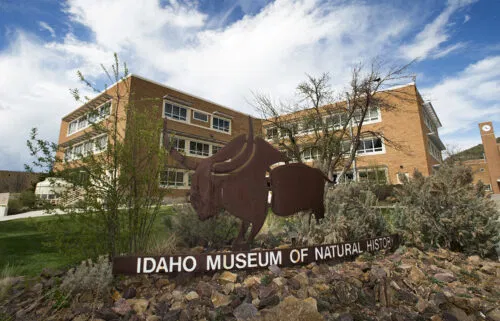Prehistoric lobster named after Idaho State University paleontologist

POCATELLO, Idaho (KIFI) – A prehistoric crustacean that roamed the seas almost 250 million years ago now bears the name of an Idaho State University paleontologist.
Recently, Christopher P. A. Smith, Ph.D. candidate from the University of Burgundy in Dijon, France and his co-authors published their findings on a fossilized lobster that was found in what is now Bear Lake County in Southeastern Idaho. In the course of their research, they found the lobster was a new species and gave it the name Pemphix krumenackeri. The name honors L.J. Krumenacker, adjunct professor of geosciences at ISU and affiliate curator at the Idaho Museum of Natural History.
“We named the lobster for L.J.because he is the person who discovered the Paris Canyon fossil site where the lobster was found,” Smith said. “The site is home to the Paris Biota, which features extremely rare marine fossils from the Early Triassic period between 240 and 250 million years ago.”
The specimen of Pemphix krumenackeri measures about two inches long and is very different from the lobsters alive today, according to Smith. P. krumenackeri’s closest modern relatives are a few rare species of lobsters found in the South and Central Pacific Ocean, near Australia.
“I'm my own worst critic but an honor like this is pretty cool,” Krumenacker said. “To me, this is special and encourages me to keep doing science.”
In addition to his role as an adjunct professor at ISU and affiliate curator at IMNH, Krumenacker also serves as an adjunct professor at the College of Eastern Idaho in Idaho Falls and teaches life science at Mountain View Middle School in Blackfoot.
“I want to do the best I can to support my family and add to the body of knowledge about our amazing natural world,” Krumenacker said. “I choose to live in Blackfoot so I can meet my family commitments and I work at ISU and CEI so I can stay involved in research and college-level teaching. I teach at MVMS because I love teaching and working with the students. My hope is to eventually be able to have a full research and teaching position at the college level. Until then, I‘ll continue to - hopefully - instill a love for science in my seventh-grade students.”
In June, Krumenacker published his findings on a fossilized femur of a Tyrannosaurus-like dinosaur that was found in Eastern Idaho’s Bonneville County. It is the first fossil of a tyrannosaur found in Idaho and the oldest bone of a Cretaceous-age tyrannosaur from North America, according to Krumenacker.
More on ISU’s Department of Geosciences can be found at isu.edu/geosciences.






